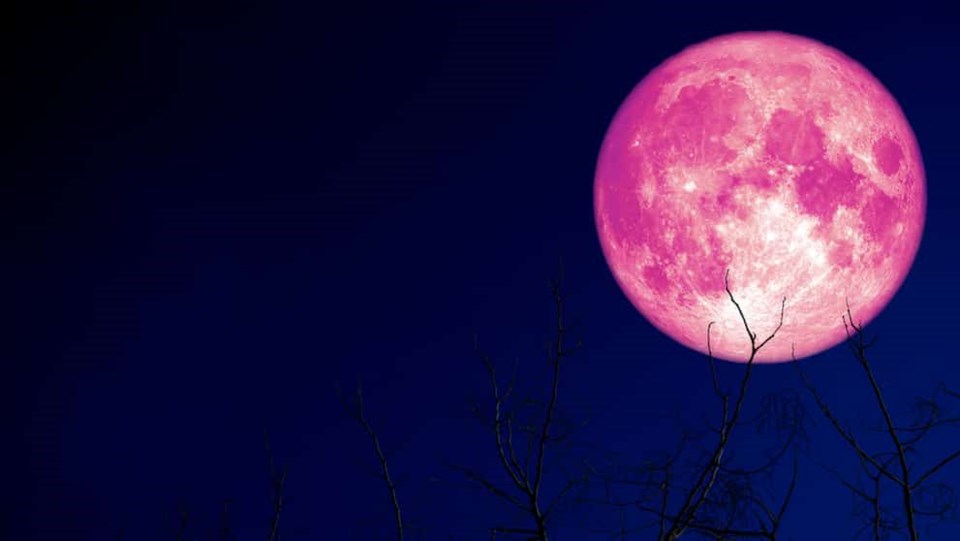What Happened
On the night of June 10, 2025, the full moon, commonly referred to as the “Strawberry Moon,” rose in the sky, marking a significant astronomical event. This particular full moon is notable for being the lowest in the Northern Hemisphere in nearly two decades, a phenomenon attributed to a major lunar standstill. The moon reached its fullest phase at 3:44 a.m. EDT on June 11, but it appeared particularly prominent and bright on the evening of June 10, as it rose above the southeastern horizon.
The term “Strawberry Moon” originates from indigenous tribes in North America, particularly the Algonquin, who named it after the time of year when strawberries are harvested. Despite its name, the moon does not take on a pink or red hue; rather, it appears larger and can exhibit a yellow-orange tint due to atmospheric scattering of light.
Key Details
-
Timing: The full moon was at its peak fullness at 3:44 a.m. EDT on June 11, 2025, but was visible as a full moon starting the evening of June 10 and remained so until the morning of June 12.
-
Lunar Standstill: This year’s Strawberry Moon coincided with a major lunar standstill, a phenomenon that occurs approximately every 18.6 years. During a standstill, the moon’s orbit reaches its maximum tilt relative to the celestial equator, causing it to appear lower in the sky during certain times of the year.
-
Historical Context: The last major lunar standstill occurred in 2006, and the next one is not expected until 2043. This makes the 2025 Strawberry Moon a rare event for skywatchers in the Northern Hemisphere.
-
Visibility: The moon’s low position in the sky enhances the “moon illusion,” where it appears larger when closer to the horizon. Observers were advised to look for the moon shortly after sunset for optimal viewing.
-
Cultural Significance: The Strawberry Moon is recognized by various indigenous tribes, with different names reflecting local flora. For example, the Shawnee refer to it as the “Raspberry Moon,” while the Creeks call it the “Blackberry Moon.”
Multiple Perspectives
The significance of the Strawberry Moon varies among different communities and cultures. For many indigenous peoples, the moon’s name reflects a deep connection to seasonal changes and agricultural practices. The Algonquin tribes, for instance, emphasize the importance of the strawberry harvest, which aligns with the timing of the full moon.
From an astronomical perspective, experts highlight the rarity of the event due to the major lunar standstill. According to EarthSky, this phenomenon alters the moon’s trajectory, making it appear lower in the sky than usual. This has prompted interest among amateur astronomers and enthusiasts who seek to observe the moon’s unique characteristics.
Conversely, some skeptics may question the significance of such events, viewing them as merely a natural occurrence without deeper implications. However, the excitement surrounding the Strawberry Moon reflects a broader human fascination with celestial events and their cultural meanings.
Context & Background
The Strawberry Moon is part of a long-standing tradition of naming full moons based on seasonal changes, a practice that dates back to indigenous cultures in North America. These names often reflect agricultural cycles, wildlife patterns, and natural phenomena. The connection between lunar phases and seasonal changes has been a significant aspect of various cultures’ calendars.
The occurrence of a major lunar standstill is a result of the gravitational influences of the sun on the moon’s orbit. This phenomenon leads to variations in the moon’s position in the sky over an 18.6-year cycle, affecting how and when it is observed from Earth. The current standstill has generated interest not only for its rarity but also for its implications for lunar observations and cultural practices tied to the moon.
What We Don’t Know Yet
While the Strawberry Moon has been observed and documented, there are still uncertainties regarding the long-term impacts of lunar standstills on cultural practices and astronomical observations. For instance, researchers may explore how such events influence agricultural practices among indigenous communities or how they affect public interest in astronomy.
Additionally, the specific visual effects of the moon during this standstill, such as the extent of the moon illusion and its perceived size, could be further studied. Observations from different geographical locations may yield varying experiences of the moon’s appearance, raising questions about local atmospheric conditions and their effects on lunar visibility.
In summary, the Strawberry Moon of June 2025 represents a convergence of cultural significance and astronomical rarity, inviting both celebration and inquiry into the natural world.





